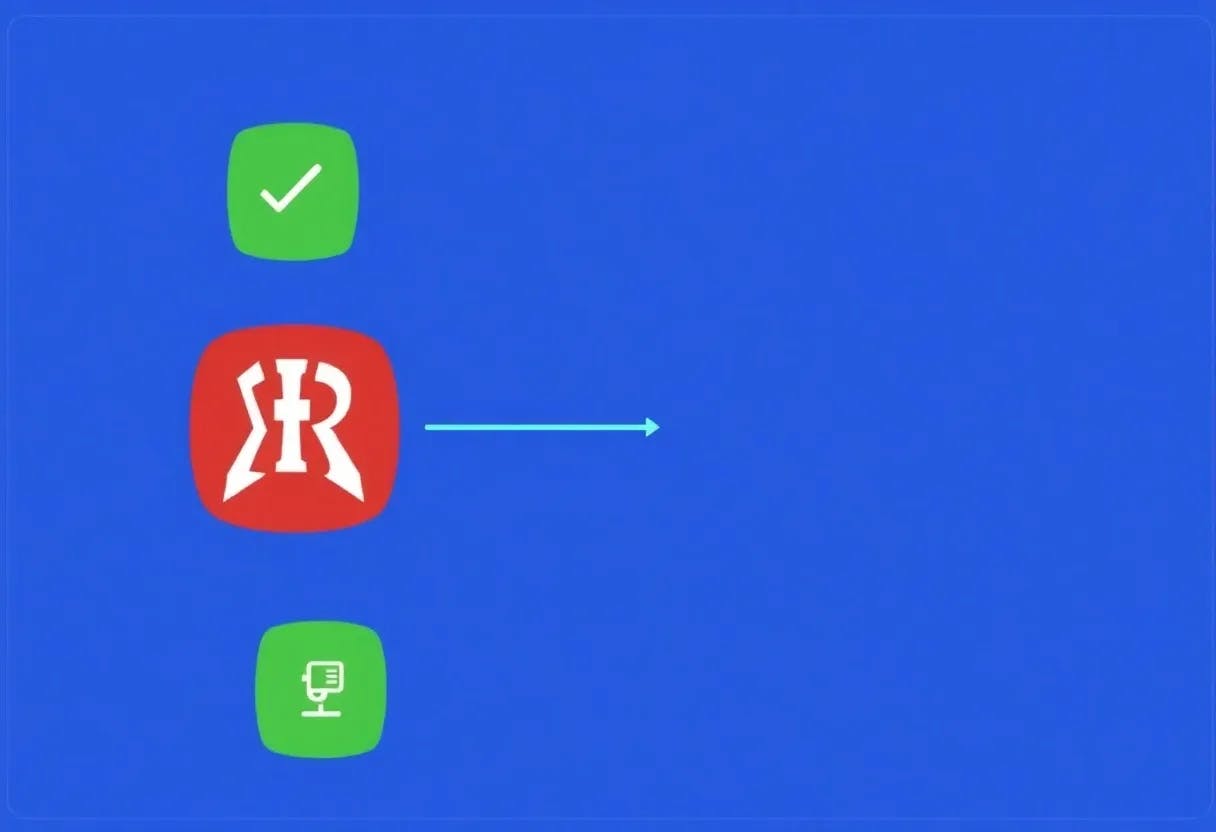Artificial intelligence is advancing at breakneck speed, yet most of the infrastructure powering AI remains highly centralized, controlled by a few large companies. At the same time, Web3 continues to push the boundaries of what decentralized systems can achieve. Where these two worlds intersect is where 0G Labs positions itself, building what it calls the “Solana for AI,” a decentralized operating system designed for large-scale, low-latency AI workloads.
In this interview, I speak with Michael Heinrich, CEO of 0G Labs, about why decentralization matters for AI, how Web3 infrastructure can solve bottlenecks in scaling machine learning, and what the future of AI-native blockchains looks like.
Ishan Pandey: Hi Michael, welcome to our “Behind the Startup” series. Please tell us about your journey and what led you to build 0G Labs?
Michael Heinrich: My journey’s been something of a wild ride, all the way back to my earliest memories. I was born in East Berlin just before the Berlin Wall came down. I faintly remember the night it fell and my family emigrated to the US when I was young, settling in California. That early experience of crossing borders and adapting to new worlds and languages likely planted the seeds for my fixation on breaking down barriers, both literally and figuratively.
I studied economics and computer science at UC Berkley, but to be honest, while the learning came naturally, I was restless and agitating to find some deeper purpose. It would take a few more years before that call was answered with the founding of 0G Labs. In the interim, I left college and cut my teeth in the corporate world at places like Microsoft, Bain & Company, and Bridgewater Associates, where I learned about scaling systems and building high-performance teams.
Then came my first taste of entrepreneurship when I founded Garten, a corporate wellness company that delivered healthier cafeteria options for businesses, which grew to serve hundreds of employees across the US. It was my first real startup, and it taught me resilience and the need to engineer shock-resistant systems.
Fast forward to grad school at Stanford, where I was introduced to Fan Long and Ming Wu by my classmate Thomas in 2023. Thomas, who is also one of the co-founders of Zero Gravity Labs, brought us together at a time when AI was exploding but locked in centralized silos controlled by Big Tech. We all saw blockchain as the key to democratizing it, making AI a public good that’s accessible to everyone. That’s what led us to found 0G Labs in 2023. We’re building DeAIOS, a decentralized AI operating system, because I believe the future of innovation isn’t in walled gardens; it’s in open, collaborative ecosystems. At 0G Labs, I can honestly say I’ve found my calling, and every day I wake up excited to get out of bed and keep building.
Ishan Pandey: 0G has been described as the “Solana for AI.” Can you break down what you mean by that, and why existing blockchains are not suited for AI-scale workloads?
Michael Heinrich: This comparison highlights the speed, scalability, and low latency we’re bringing to decentralized AI compared to incumbent solutions. Solana revolutionized smart contract blockchains by enabling thousands of transactions per second at minimal cost without sacrificing decentralization, something that was streets ahead of the then-market leader Ethereum.
We’re doing something similar but tailored for AI: creating a modular Layer 1 blockchain that supports massive, real-time AI workloads for inference, training, and data processing. Existing blockchains fall short for AI because they’re optimized for financial transactions, not the data-heavy demands of machine learning. AI requires enormous bandwidth for data availability, we’re talking petabytes of datasets streaming in low-latency environments and most chains run into bottlenecks due to storage costs or limited composability.
We solve this with components like 0G DA (Data Availability), which provides infinitely scalable, high-speed data layers, and 0G Storage, offering ultra-low-cost, verifiable permanence for structured and unstructured data. For AI builders, this is like upgrading from a biplane to a jet, way faster, way more efficient, and also a lot more fun since now the only limitations are your imagination.
Ishan Pandey: The AI industry today is dominated by centralized players. Why do you believe decentralization is not just a philosophical stance but a technical and economic necessity for AI?
Michael Heinrich: The likes of OpenAI, Google, and AWS control the AI stack today, and while this provides convenience in terms of guaranteed access and uptime, this setup also creates real risks. Even if we set aside the philosophical benefits of decentralization, from a purely technical perspective, it’s obvious that having a triumvirate of Big Tech players calling the shots is suboptimal. Centralization leads to single points of failure: data silos that stifle innovation, vulnerability to censorship or outages, and biased models trained on proprietary datasets. Economically, it also prices out smaller players; GPUs and compute are expensive enough, but locked ecosystems mean you’re paying a premium for access.
Decentralized solutions have a major role to play in ameliorating these issues. At 0G, we’re building tools like our Compute Network for trustless AI inference, secured by cryptography, so that anyone can contribute resources and earn rewards. This creates a global, permissionless marketplace where costs drop dramatically, our storage is orders of magnitude cheaper than AWS S3 and a culture of innovation is fostered through composability. Imagine AI agents collaborating onchain without intermediaries or verifiable models that prevent hallucinations.
These sorts of open-source and interoperable solutions are necessary because AI’s impact on society is too big to be gatekept; decentralizing it ensures equitable access and reduces monopolies. I’ve seen centralized systems crumble firsthand and will remain convinced till my last breath that decentralization isn’t optional, it’s essential.
Ishan Pandey: A lot of people talk about compute and GPUs as the bottleneck for AI. From your perspective, what are the real constraints, data, bandwidth, economics and how does 0G tackle them differently?
Michael Heinrich: Great question. Compute gets all the headlines because GPUs are flashy and scarce, but in my view, the real chokepoints are data availability, bandwidth, and economics and by “economics” I mean the price you pay to access these resources. NVIDIA’s cranking out chips faster than ever, but where’s the infrastructure to feed them massive, verifiable datasets at scale? Data is fragmented and centralized, bandwidth limits low-latency streaming for real-time AI, and as for economics, well, where do we start?
Cloud providers charge over the odds, often locking clients into rigid subscription-based models, making AI inaccessible for solo devs or startups that have yet to be blessed with VC cash. Even then, early-stage funding is only a bandaid, cos you need to start generating revenue sooner rather than later or you’ll eventually blow your budget on GPUs with nothing to show for it other than some cool renders.
At 0G, we tackle these resource issues head-on. Our 0G DA layer provides high-speed, infinitely scalable data availability – we’ve been hitting 11,000 TPS per shard on testnet, with over 650 million transactions already processed. For bandwidth, our modular chain uses multi-consensus validation to handle AI workloads without congestion. Economically, we slash costs: 0G Storage offers decentralized, AI-optimized storage at pennies compared to centralized options, with cryptographic permanence to ensure data integrity.
Unlike traditional setups, we’re creating an open economy where users run alignment nodes or provide compute for rewards. It’s like turning AI infrastructure into a shared resource pool, making it more efficient and inclusive.
Ishan Pandey: You’ve mentioned the idea of a “decentralized operating system for AI.” What does that look like in practice, and how does it compare to traditional cloud infrastructure models in terms of pricing and benefits for end users?
Michael Heinrich: The “decentralized operating system for AI,” or DeAIOS, is essentially a full-stack platform where AI runs natively on blockchain. It’s scalable, composable, and trustless. In practice, it means developers can deploy AI models or agents by leveraging components such as the Service Marketplace for trading models, or Alignment Nodes to ensure ethical, efficient performance. Running inference on a global network of nodes, with data pulled seamlessly from 0G Storage and verified onchain is a much cheaper and more transparent way of doing things versus relying on centralized servers and Big Tech’s inflexible pricing.
Compared to traditional clouds like AWS or Azure, the differences are stark. Let’s start with pricing: centralized cloud provider costs can quickly stack up, with intermediaries adding on their fees for storage and compute along the way. We cut that by decentralizing supply, so end users pay near-cost. As for the other benefits this model bestows, permissionless access means no vendor lock-in; censorship resistance protects against shutdowns; and composability lets apps interoperate fluidly, sparking innovations like onchain AI gaming.
Finally, verifiability ensures models are auditable, reducing risks like bias. It’s relatable: think of it as open-source Linux versus proprietary Windows but for AI. Users get faster iteration and ownership in the ecosystem. We’ve seen this in our testnet with 22 million active accounts – it’s already empowering a new wave of builders.
Ishan Pandey: Many skeptics argue that Web3 adds unnecessary complexity to AI. How do you respond to the criticism that decentralization slows innovation instead of accelerating it?
Michael Heinrich: I hear this a lot, and I understand that Web3 can feel like adding gears to a machine that’s already ticking over. But from my experience of building in both worlds, decentralization doesn’t slow innovation – it turbocharges it by solving problems that centralization can’t. Yes, it adds a degree of complexity but it’s purposeful: cryptographic proofs add verifiability to AI outputs, preventing fakes or manipulations that plague centralized models. And blockchain’s composability means devs can mix and match components – like plugging an AI oracle from Ora into 0G’s chain – without starting from scratch.
Critics overlook how Web3 accelerates parallel development: thousands of nodes worldwide contribute compute, data, and ideas, outpacing any single company’s R&D. At 0G, we’ve raised $35M and hit milestones like 8,000 validators because this model draws global talent. It hasn’t slowed us but has rather propelled us. Ultimately, this all comes down to trade-offs: introducing a little short-term complexity in return for long-term resilience and inclusivity. Innovation thrives in open systems and so, to my mind, Web3 isn’t a hurdle; it’s the accelerator pedal for AI’s next phase.
Ishan Pandey: Finally, what advice would you give to founders trying to build companies at the cutting edge of both AI and blockchain?
Michael Heinrich: To founders at this intersection: first, don’t die, protect your mission at all costs. My journey has taught me that resilience wins, whether it’s overcoming personal setbacks or navigating market downturns, so keep iterating and surround yourself with a strong team that will always have your back. Second, focus on real problems and describe the solutions in real terms. It’s fine to occasionally dispense big picture stuff, onboarding the next billion users, yadda yadda but as a founder, your job is really to explain your tech in ways that lay people can understand. Even if you’re marketing to AI builders, who understand this stuff, think about their end users, because they’re the people this tech is ultimately gonna trickle down to.
Finally, never be afraid to change your mind. It’s okay to be wrong sometimes. And it’s more than okay to change your perspective on something when new evidence comes to light, which, in an industry evolving as fast as AI, is a given. Be confident in your convictions, yet honest enough to admit that you will always be a student and will always be learning. Your team and your shareholders will respect you a lot more if you do. Move fast, learn faster, and try not to break too much stuff along the way.
Don’t forget to like and share the story!
:::tip
This author is an independent contributor publishing via our business blogging program. HackerNoon has reviewed the report for quality, but the claims herein belong to the author. #DYO
:::
n










